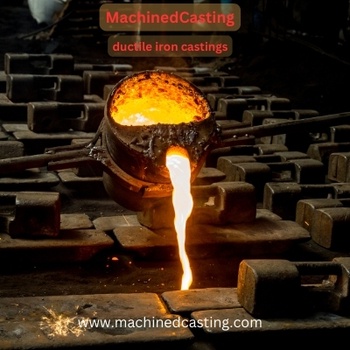Ductile iron, also known as nodular iron, is a versatile material prized for its combination of strength, durability, and ductility. It finds extensive use in various industries, from automotive to construction. Understanding the intricacies of ductile iron castings is essential for achieving optimal results in manufacturing processes. This guide aims to provide a detailed overview of ductile iron castings, including its properties, production methods, applications, and best practices.
Properties of Ductile Iron: Ductile iron exhibits excellent mechanical properties, including high tensile strength, good impact resistance, and impressive ductility. Its microstructure consists of graphite nodules dispersed throughout the iron matrix, which allows for greater flexibility and deformation without fracturing. Additionally, ductile iron offers good machinability and wear resistance, making it suitable for a wide range of applications.
Production Methods: There are several methods for producing ductile iron castings, with the most common being the sand casting process. This involves creating a mold from sand mixed with a binder, into which molten ductile iron is poured. Other methods include shell molding, investment casting, and centrifugal casting, each offering unique advantages depending on the complexity of the casting and desired properties.
Applications: Ductile iron castings are utilized in various industries due to their superior mechanical properties and cost-effectiveness. In the automotive sector, they are commonly found in engine components, such as crankshafts, camshafts, and differential cases. In construction, ductile iron is used for manufacturing pipes, fittings, and valves due to its corrosion resistance and strength. It also finds applications in the agricultural, mining, and aerospace industries.
Best Practices for Ductile Iron Castings: To achieve high-quality ductile iron castings, several best practices should be followed:
- Proper Design: Designing the casting with considerations for material thickness, fillets, and draft angles can minimize defects and improve mechanical properties.
- Control of Pouring Temperature: Maintaining the correct pouring temperature is crucial to ensure proper fluidity and reduce the risk of defects like shrinkage and porosity.
- Use of Quality Materials: Using high-quality ductile iron with the appropriate nodularity and chemistry is essential for achieving desired mechanical properties.
- Adequate Cooling and Solidification: Proper cooling and solidification rates help prevent internal stresses and ensure uniform properties throughout the casting.
- Quality Assurance: Implementing rigorous quality control measures throughout the production process, including inspection and testing, can identify defects early and ensure compliance with specifications.
In conclusion, mastering the art of ductile iron castings requires a deep understanding of its properties, production methods, applications, and best practices. By following these guidelines, manufacturers can produce high-quality castings that meet the demands of various industries.


No comments yet